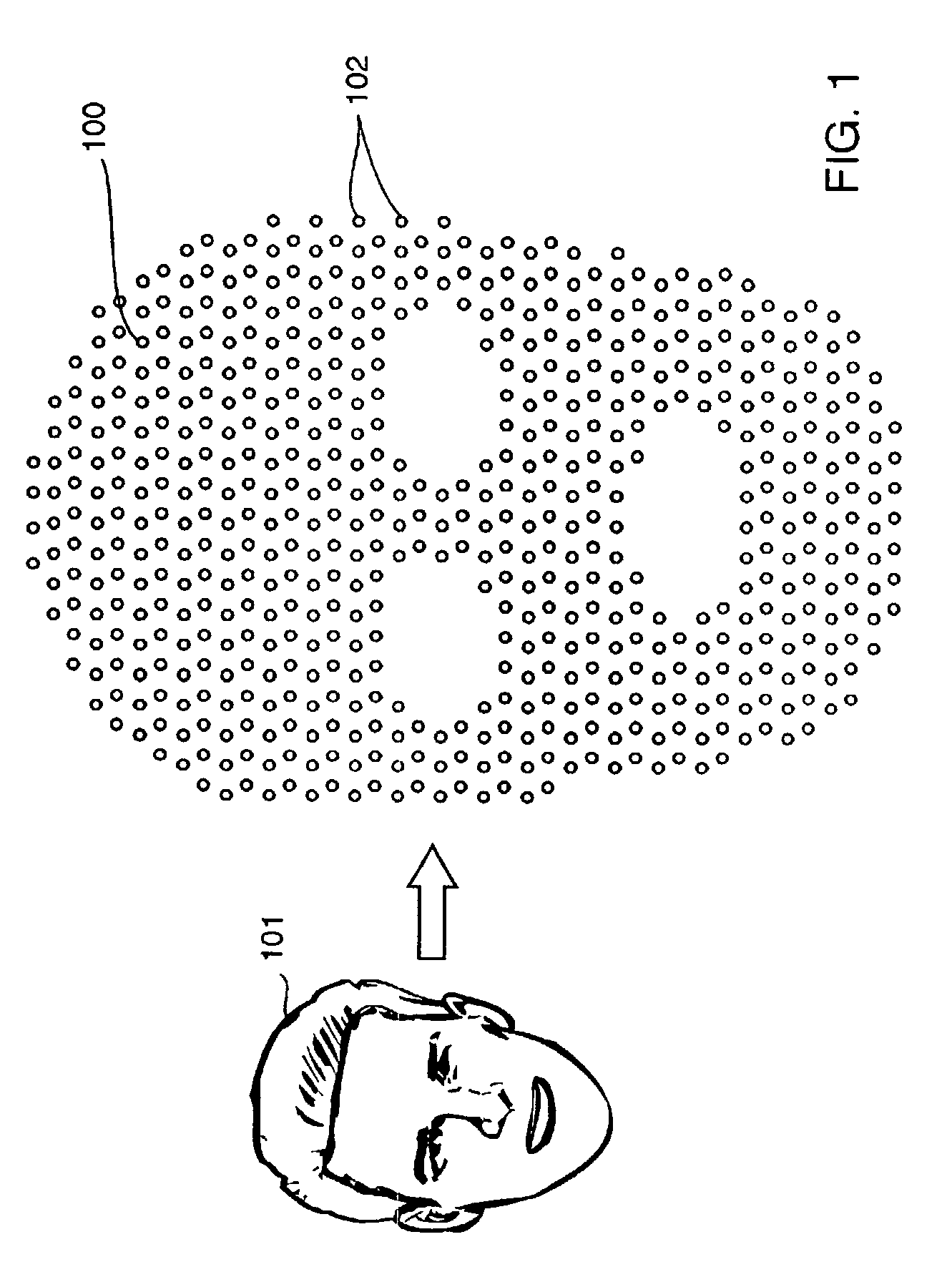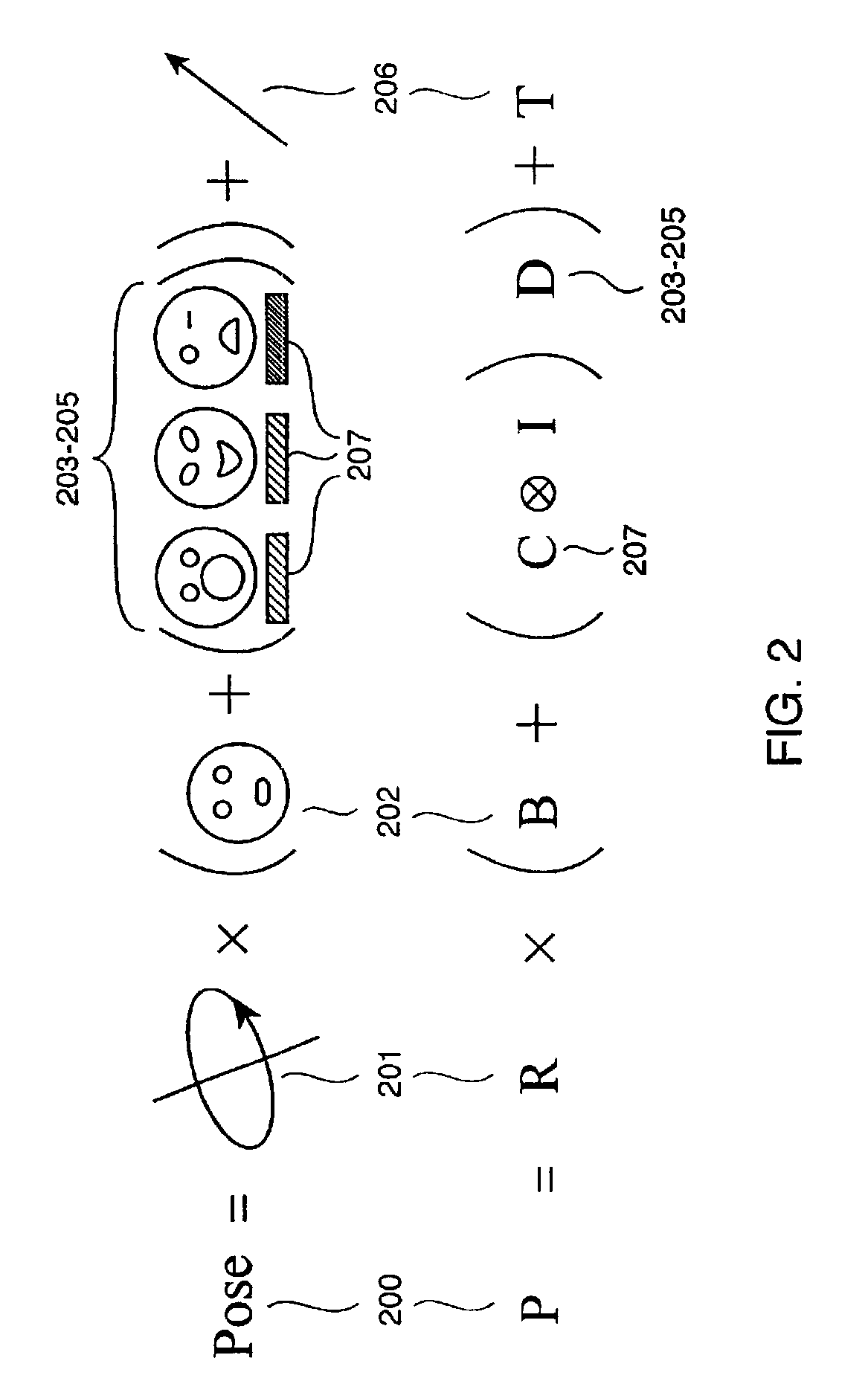Modeling shape, motion, and flexion of non-rigid 3D objects in a sequence of images
a 3d object and sequence technology, applied in the field of computer vision, can solve the problems of not fully solving the problem, unable to recover such parameters directly from pixel intensities variations, and the price to pay for using 2d models of essentially 3d variability, so as to minimize information loss, increase the detail and accuracy of models, and minimize the effect of matrix operations
- Summary
- Abstract
- Description
- Claims
- Application Information
AI Technical Summary
Benefits of technology
Problems solved by technology
Method used
Image
Examples
Embodiment Construction
Introduction
[0016]The invention provides a linear, model-based object tracking method. The method tracks a non-rigid, three-dimensional (3D) object in a sequence of images. The image sequence can be composed of 2D data, e.g. a video, or 3D volumetric data, e.g., a time-series of volume data sets. The method determines 3D motion and flexion, i.e., deformation coefficients, directly from intensity values in the images without information-lossy intermediate results. A Bayesian framework manages uncertainty, and accommodates prior probabilities to give confidence measures.
[0017]The invention provides accurate and robust closed-form motion estimators by minimizing information loss from non-reversible matrix operations such as divisions, inner products and least-squares calculations such as divisions. These matrix operations are either eliminated, or else, where unavoidable, delayed as long as possible and then performed with appropriate error norms. For model acquisition, the method acco...
PUM
 Login to View More
Login to View More Abstract
Description
Claims
Application Information
 Login to View More
Login to View More - R&D
- Intellectual Property
- Life Sciences
- Materials
- Tech Scout
- Unparalleled Data Quality
- Higher Quality Content
- 60% Fewer Hallucinations
Browse by: Latest US Patents, China's latest patents, Technical Efficacy Thesaurus, Application Domain, Technology Topic, Popular Technical Reports.
© 2025 PatSnap. All rights reserved.Legal|Privacy policy|Modern Slavery Act Transparency Statement|Sitemap|About US| Contact US: help@patsnap.com



